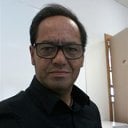Sustainable Energy Systems: From Primary to End-Use
A special issue of Sustainability (ISSN 2071-1050). This special issue belongs to the section "Sustainable Engineering and Science".
Deadline for manuscript submissions: closed (31 December 2018) | Viewed by 78851
Special Issue Editors
Interests: sustainability in general; sustainable energy systems; sustainable industrial engineering and management; sustainable management systems: quality and sustainability; maintenance and sustainability; occupational health and safety and sustainability; sustainable energy; sustainable and lean production; circular economy
Special Issues, Collections and Topics in MDPI journals
Interests: industrial engineering; industrial symbiosis; energy management; sustainability; circular economy; additive manufacturing; lean manufacturing; quality management systems; sustainable energy systems
Special Issues, Collections and Topics in MDPI journals
2. GOVCOPP - Unidade de Investigação em Governança, Competitividade e Políticas Públicas, Universidade de Aveiro, Campus Universitário de Santiago, 3810-193 Aveiro, Portugal
3. DEGEIT - Departamento de Economia, Gestão, Engenharia Industrial e Turismo, Universidade de Aveiro, Campus Universitário de Santiago, 3810-193 Aveiro, Portugal
Interests: biomass; biomass energy; biomass supply chains; biomass conversion technologies; sustainability and circular economy
Special Issues, Collections and Topics in MDPI journals
Special Issue Information
Dear Colleagues,
The long-term transformation of the energy industry, from fossil to sustainable energy sources, is one of the central challenges of the 21st century. Such a transition requires many changes on a technical and organizational level. The successful implementation of the energy transition requires not only sufficient generation capacity from renewable energies, but also an efficient, intelligent, decentralized and secure infrastructure for the distribution, storage and use of electricity and heat. The resulting change in the energy industry poses major challenges for small and medium-sized enterprises (SMEs) in particular. On the one hand, this creates great opportunities for the development of new business models, products and processes, on the other hand, a stronger networking of decentralized system components also entails risks, which are due in particular to the increased use of information and communication technology (ICT) and the automation of processes. The goal must therefore be to create solutions for a sustainable energy system that is economically, environmentally and socially viable, while meeting high security requirements.
This Special Issue will focus on sustainable energy systems. On the one hand, several innovative and alternative concepts could be presented, but also the topics of energy policy, circular economy, life cycle assessment and supply chain could play a major role. Models on various temporal and geographical scales could be developed to understand the conditions of technical as well as organizational change. New methods of modeling, which can fulfil technical and physical boundary conditions and nevertheless consider economic environmental and social aspects, could be developed.
Prof. Dr. João Carlos de Oliveira Matias
Dr. Radu Godina
Dr. Leonel Nunes
Guest Editors
Manuscript Submission Information
Manuscripts should be submitted online at www.mdpi.com by registering and logging in to this website. Once you are registered, click here to go to the submission form. Manuscripts can be submitted until the deadline. All submissions that pass pre-check are peer-reviewed. Accepted papers will be published continuously in the journal (as soon as accepted) and will be listed together on the special issue website. Research articles, review articles as well as short communications are invited. For planned papers, a title and short abstract (about 100 words) can be sent to the Editorial Office for announcement on this website.
Submitted manuscripts should not have been published previously, nor be under consideration for publication elsewhere (except conference proceedings papers). All manuscripts are thoroughly refereed through a single-blind peer-review process. A guide for authors and other relevant information for submission of manuscripts is available on the Instructions for Authors page. Sustainability is an international peer-reviewed open access semimonthly journal published by MDPI.
Please visit the Instructions for Authors page before submitting a manuscript. The Article Processing Charge (APC) for publication in this open access journal is 2400 CHF (Swiss Francs). Submitted papers should be well formatted and use good English. Authors may use MDPI's English editing service prior to publication or during author revisions.
Keywords
- Energy Policy
- Energy Life Cycle Assessment
- Energy and Circular Economy
- Energy Technology
- Energy and Reserve Markets
- Renewable Energy
- Renewable Generation Forecasting
- Distributed Generation
- Optimization Models
- Stochastic Models
- Energy Storage Systems
- Energy Efficiency in End-Use sectors
- Electric and Hydrogen Mobility
- Building Energy Conservation
- Multi-Energy Systems








